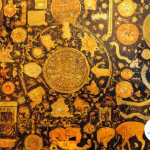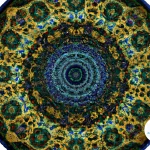Are you curious about the fascinating world of astrology and its impact on relationships? Look no further as we dive into the intriguing topic of planetary aspects and their significance in relationship dynamics. Astrological aspects, the angles formed between planets in a birth chart, play a crucial role in shaping the dynamics between individuals. By understanding these aspects, we can gain insight into compatibility, communication, emotional connection, and intimacy in relationships. Join us as we explore the key planetary aspects and how they influence relationships, interpret these aspects, apply them to relationship analysis, and learn strategies for managing challenging aspects. Get ready to unlock the secrets of the cosmos and discover the importance of planetary aspects in relationship dynamics.
What are Planetary Aspects?
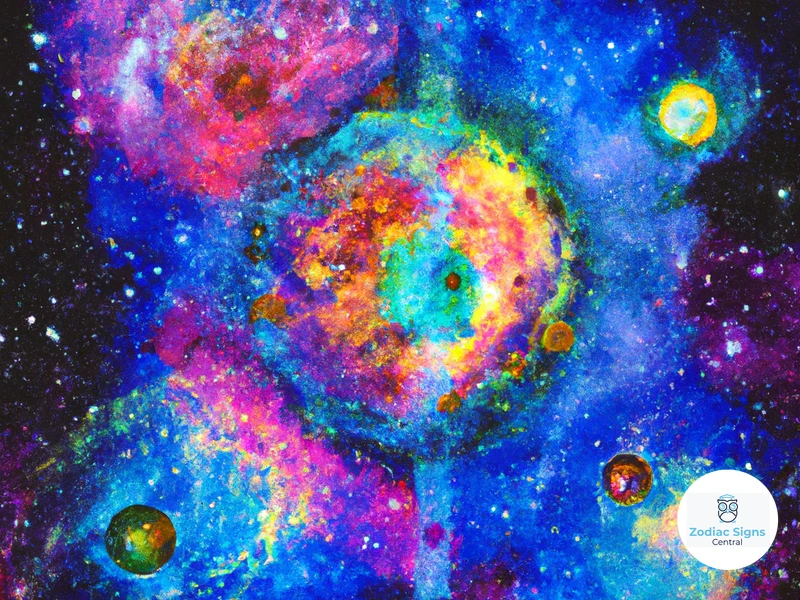
Planetary aspects, in the realm of astrology, refer to the various angles formed between planets in a birth chart. These angles are significant as they create a unique energetic interaction between the planets involved. Each aspect represents a different relationship dynamic, influencing compatibility, communication, and emotional connection between individuals. Whether it’s a harmonious trine, a challenging square, or a dynamic conjunction, these aspects shape the overall energy and potential of a relationship. Understanding planetary aspects can provide valuable insights into the strengths and challenges within a relationship. For example, a favorable Sun-Moon aspect can enhance emotional compatibility and deepen the bond between partners. On the other hand, a difficult Saturn-Pluto aspect may bring power struggles and intense transformation to the partnership. By analyzing and interpreting these aspects, astrologers can gain a deeper understanding of the dynamics at play in a relationship, enabling individuals to navigate their connections with awareness and insight. With this knowledge, individuals can build stronger, more fulfilling relationships by harnessing the power of planetary aspects.
The Influence on Relationship Dynamics
The influence of planetary aspects on relationship dynamics is profound and multifaceted. These aspects shape the interactions and connections between individuals, creating a unique energetic field that can either enhance or challenge the relationship. Compatibility and synastry, the study of planetary positions in relation to one another, allow astrologers to assess the potential harmony and alignment between individuals. Communication and understanding are also greatly influenced by planetary aspects, as they govern how individuals express themselves and connect with their partners. Emotional connection and intimacy, essential components of any relationship, are deeply impacted by these aspects, determining the level of emotional depth and vulnerability experienced by partners. By understanding and working with the planetary aspects present in a relationship, individuals can gain valuable insights into their dynamics, identify areas of strength and growth, and navigate challenges more effectively. Astrology offers a unique lens through which couples can deepen their connection, improve communication, and foster a harmonious and fulfilling partnership. If you’re interested in exploring your relationship dynamics further, you may also want to check out our /love-compatibility-gemini-zodiac/ to understand the compatibility between Gemini and other zodiac signs.
1. Compatibility and Synastry
Compatibility and synastry are essential aspects to consider when analyzing the dynamics of a relationship through planetary aspects. In astrology, compatibility refers to the overall harmony and alignment between two individuals’ birth charts, while synastry examines the specific interactions and connections between their planets. These aspects play a fundamental role in determining the overall compatibility and potential success of a relationship. A favorable Sun-Moon aspect, for example, indicates emotional compatibility and a deep understanding between partners. Similarly, a strong Venus-Mars aspect can enhance passion and attraction in a romantic relationship. Compatibility and synastry provide a roadmap for understanding the strengths and challenges within a relationship, helping individuals navigate potential pitfalls and cultivate the areas of connection that bring them joy and fulfillment. By examining the planetary aspects involved in compatibility and synastry, astrologers gain valuable insights into the dynamics at play, allowing individuals to make informed decisions and build lasting, harmonious relationships.
2. Communication and Understanding
Effective communication and understanding are vital components of any successful relationship. In the realm of astrology, planetary aspects can greatly influence these aspects of a partnership. For example, a harmonious Venus-Mars aspect can contribute to open and harmonious communication between partners. This aspect fosters a strong connection between the expression of love (Venus) and the expression of desire (Mars), allowing for a deeper understanding of each other’s needs and wants. Partners with this aspect may find it easier to communicate their desires, express affection, and resolve conflicts in a balanced and respectful manner. On the other hand, challenging aspects, such as a tense Mercury-Jupiter aspect, can create communication hurdles within a relationship. This aspect may result in miscommunication, misunderstandings, or difficulties in finding common ground. However, it’s important to note that with awareness and effort, these challenges can be overcome. Couples can learn to navigate and improve their communication skills through active listening, empathy, and patience. By understanding the planetary aspects related to communication and fostering a commitment to open and honest dialogue, partners can strengthen their bond and cultivate a deeper understanding of one another. Communication is the key to building trust, resolving conflicts, and maintaining a healthy and fulfilling relationship. So, whether you’re exploring the role of Venus in artistic talents or seeking astro insights for work relationships, understanding the planetary aspects influencing communication and understanding is essential.
3. Emotional Connection and Intimacy
Emotional connection and intimacy are vital aspects of any relationship. In the realm of astrology, certain planetary aspects hold significance in creating and nurturing these bonds. When examining the planetary aspects that influence emotional connection and intimacy, one must consider the placement of Venus, the planet associated with love, beauty, and romance. A harmonious Venus-Mars aspect can ignite passion and desire, bringing a sense of excitement and intensity to the relationship. This aspect enhances the emotional connection by fostering a deep understanding of each other’s desires and needs. Additionally, the Mercury-Jupiter aspect plays a role in emotional connection through communication and intellectual compatibility. This aspect promotes open and honest dialogue, allowing for a deeper understanding of each other’s emotions. Enhanced communication leads to a stronger emotional bond and a greater sense of intimacy. It’s important to note that while planetary aspects can influence emotional connection and intimacy, they are not the sole determining factors. Other planetary placements and aspects contribute to the overall dynamics of a relationship. By exploring and interpreting these aspects, individuals can gain valuable insights into their emotional connection and intimacy with their partners, fostering a more fulfilling and meaningful relationship. To further enhance your understanding of Venus’s role in relationships, you can read our article on the role of Venus in artistic talents.
Key Planetary Aspects in Relationships
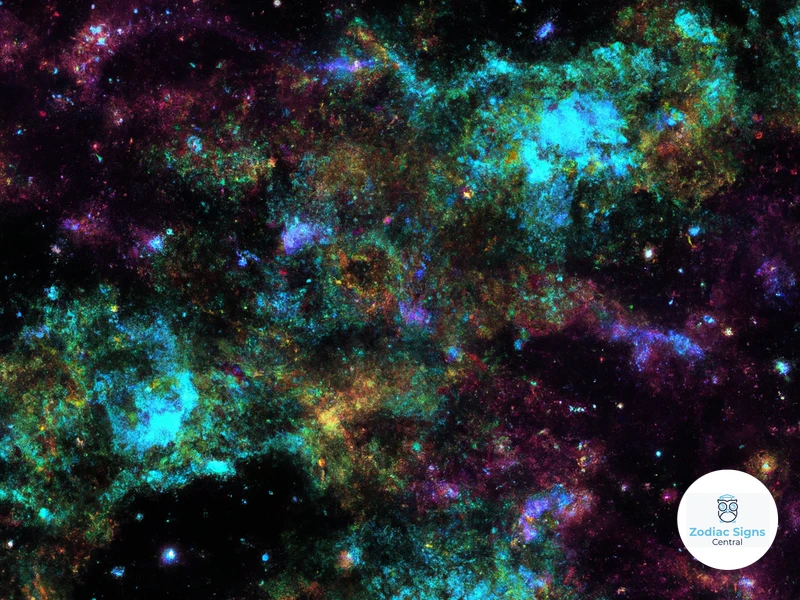
When it comes to relationships, certain planetary aspects hold particular significance. These key aspects shed light on the dynamics between individuals and can greatly influence the course of a partnership. The Sun-Moon aspect, for example, highlights the emotional compatibility and overall harmony between two individuals. This aspect helps determine if partners share similar values and have a deep understanding of one another’s needs. Another important aspect is the Venus-Mars aspect, which plays a role in physical attraction, passion, and the overall balance of masculine and feminine energies within a relationship. This aspect can be an indicator of the level of romance and sexual chemistry between partners. Additionally, the Mercury-Jupiter aspect affects communication and intellectual compatibility. It reveals how well partners understand and appreciate each other’s thoughts, ideas, and beliefs. Lastly, the Saturn-Pluto aspect brings intensity, transformation, and challenges to a relationship. It can indicate power struggles, karmic lessons, and deep transformation that partners must navigate together. Understanding these key planetary aspects allows individuals to gain a deeper understanding of their relationship dynamics and work towards building stronger and more fulfilling connections. To gain further insights into the role of astrology in relationships, you can explore how astrological insights can also be applied to work relationships here.
1. Sun-Moon Aspect
The Sun-Moon aspect is one of the most significant and influential planetary aspects in relationship dynamics. This aspect represents the connection between the core essence of an individual (Sun) and their emotional nature (Moon). When these two planets are in harmonious alignment, such as a trine or a conjunction, it can indicate a strong emotional bond and a deep understanding between partners. This aspect fosters shared values, goals, and a sense of emotional security in the relationship. Partners with a positive Sun-Moon aspect often have a natural affinity and are able to support each other’s emotional needs with ease.
However, challenging aspects, such as a square or an opposition, between the Sun and Moon can bring about friction and emotional tension within a relationship. This can lead to power struggles, conflicting needs, and difficulty in understanding each other’s emotions. It is crucial for partners to develop effective communication skills and learn how to navigate these differences with compassion and understanding.
The Sun-Moon aspect also plays a significant role in determining the overall compatibility between individuals. For example, a strong Sun-Moon aspect between partners can indicate a solid foundation and compatibility in areas such as family life, values, and emotional expression. Conversely, a weak or challenging Sun-Moon aspect may suggest underlying conflicts and emotional disconnect.
By understanding and interpreting the Sun-Moon aspect in a relationship, individuals can gain valuable insights into the emotional compatibility and overall dynamics between partners. This understanding can serve as a guide for navigating challenges, fostering emotional connection, and building a strong and fulfilling partnership.
2. Venus-Mars Aspect
The Venus-Mars aspect is a significant planetary connection that brings together the energies of love, passion, and desire in a relationship. When Venus, the planet of love and beauty, forms an aspect with Mars, the planet of passion and assertion, it creates a dynamic interplay between romance and sexuality. This aspect can greatly influence the overall chemistry and level of attraction between two individuals. A harmonious Venus-Mars aspect, such as a trine or sextile, enhances the passion and harmony in a relationship. It promotes a sense of balance, mutual understanding, and a strong physical connection. Partners with this aspect tend to have a stimulating and satisfying love life. On the other hand, a challenging Venus-Mars aspect, such as a square or opposition, can create tension, conflict, and power struggles in relationships. This aspect may bring about differences in desires, communication styles, and approaches to intimacy. However, it is important to note that challenging aspects can also fuel intense passion and sexual chemistry when managed properly. Understanding the Venus-Mars aspect can shed light on the dynamics of attraction, love language, and sexual expression within a relationship. It helps individuals navigate these aspects of their connection with understanding, openness, and communication. By acknowledging and embracing the influences of Venus and Mars, partners can cultivate a healthy balance of love, passion, and desire in their relationship, allowing it to thrive and grow.
3. Mercury-Jupiter Aspect
A Mercury-Jupiter aspect in a relationship indicates a strong intellectual connection and a shared love for knowledge and growth. This aspect brings a sense of expansiveness, open-mindedness, and curiosity to the dynamics between individuals. Mercury represents communication, thinking, and learning, while Jupiter symbolizes wisdom, abundance, and expansion. When these two planets form a harmonious aspect, such as a trine or a sextile, it can enhance communication, understanding, and the exchange of ideas in a relationship. Partners with this aspect tend to have stimulating conversations, explore new concepts together, and inspire each other’s intellectual pursuits. They may enjoy engaging in philosophical discussions, studying together, or embarking on educational pursuits as a couple. The Mercury-Jupiter aspect also brings optimism and a sense of adventure, encouraging partners to explore new horizons and embrace personal growth. However, it’s important to note that in some cases, an excessive Jupiter influence can lead to overconfidence or an overpowering need to be right. It’s crucial for individuals with this aspect to maintain humility and balance in their communication to avoid potential conflicts or a superiority complex. Embracing the positive attributes of the Mercury-Jupiter aspect can foster a deep intellectual connection and create a harmonious space for growth and expansion within the relationship.
4. Saturn-Pluto Aspect
The Saturn-Pluto aspect is a powerful and transformative combination that can greatly impact relationship dynamics. When Saturn, the planet of structure, responsibility, and limitations, forms an aspect with Pluto, the planet of transformation, power, and deep psychological insight, the energy can be intense and profound. This aspect signifies a potential for deep emotional connections and the ability to navigate challenging situations together. However, it also brings forth themes of power struggles, control, and transformation within the relationship.
Individuals with a Saturn-Pluto aspect in their birth charts may experience a strong sense of shared purpose and determination in their relationships. They are likely to take their commitments seriously and are willing to put in the necessary effort to make the relationship work. This aspect can foster a sense of loyalty, stability, and longevity in partnerships. However, it can also lead to power dynamics and control issues, as both Saturn and Pluto represent authority and the desire for influence.
In a healthy relationship with a Saturn-Pluto aspect, both individuals can work together to transform and deepen their connection. They can support each other through challenges, helping each other grow and evolve on a personal and spiritual level. The key to managing this aspect lies in maintaining open and honest communication, as well as embracing the transformative energy it brings. By recognizing and working through power struggles, individuals can foster a relationship that encourages personal growth and resilience.
It is important to note that the Saturn-Pluto aspect can manifest differently depending on other aspects in the birth chart and the overall compatibility between individuals. As with any aspect, it is essential to consider the entire birth chart and synastry to gain a more comprehensive understanding of the relationship dynamics.
Ultimately, the Saturn-Pluto aspect offers the potential for profound transformation, emotional depth, and shared growth within a relationship. With awareness and conscious effort, individuals can harness the power of this aspect to create a strong and fulfilling partnership.
Interpreting Planetary Aspects
Interpreting planetary aspects is a crucial step in understanding the dynamics and potential of a relationship. There are several types of aspects that astrologers consider, each with its unique meaning and influence. The conjunction aspect occurs when two planets are within a close degree of each other, amplifying their combined energy and indicating a strong connection between the individuals involved. The opposition aspect signifies a polarity or tension between two planets, highlighting areas of potential conflict or contrasting qualities in a relationship. The trine aspect represents a harmonious and supportive connection, indicating ease and compatibility between the planets involved. Conversely, the square aspect signifies challenges and tension, requiring effort and growth to overcome. Finally, the sextile aspect signifies opportunities and positive potential, encouraging growth and development. Interpreting these aspects involves analyzing how they interact within a birth chart, considering their specific energies, and understanding how they impact the relationship dynamics. Through careful analysis and interpretation, astrologers can provide valuable insights into the strengths, challenges, and overall potential of a relationship based on the planetary aspects present.
1. Conjunction
A conjunction is a planetary aspect that occurs when two planets are in close proximity to each other, typically within 10 degrees of each other. This alignment creates a powerful fusion of energies between the planets involved. When two planets are in conjunction, their qualities and influences blend together, amplifying each other’s effects. This can result in a heightened intensity and focus in the area of life governed by the planets involved.
Conjunctions signify a strong connection and interaction between the planets, which can manifest in various ways depending on the specific planets involved. For instance, a Sun-Moon conjunction represents a powerful blending of one’s ego (Sun) and emotions (Moon), leading to a strong sense of self-awareness and emotional depth. Similarly, a Venus-Mars conjunction can create a passionate and harmonious blend of love (Venus) and desire (Mars), enhancing the romantic and sensual qualities in a relationship.
However, while conjunctions can bring forth great potential and strength, they can also present challenges. The intensity of the conjunction can sometimes lead to a merging of energies that may feel overwhelming or overpowering. It is important to recognize and channel this energy constructively to avoid becoming lost in the intensity. By understanding the specific planets involved in the conjunction and their corresponding energies, individuals can harness the powerful potential of this aspect and navigate its effects in their relationships.
2. Opposition
The opposition is an astrological aspect that occurs when two planets are approximately 180 degrees apart in the birth chart. This aspect creates a dynamic tension and polarized energies between the planets involved. The opposition represents a duality or conflict within the individual or relationship, requiring balance and integration for harmony. In relationship dynamics, the opposition can manifest as a push-pull dynamic, where partners may have contrasting needs, desires, or viewpoints. This can lead to a sense of challenge and tension as they navigate the differing energies. However, the opposition also holds the potential for growth and awareness. It presents an opportunity for partners to understand and appreciate each other’s differences, finding a middle ground and fostering a sense of balance. For example, an opposition between Venus and Mars can indicate contrasting desires for closeness and independence. By acknowledging and respecting each other’s needs, partners can navigate the tension and find a compromise that satisfies both parties. The key to managing the opposition aspect is open communication, willingness to compromise, and a mutual respect for each other’s individuality. It is important to remember that oppositions can bring depth and balance to a relationship when approached with understanding and empathy.
3. Trine
The trine is regarded as one of the most harmonious and positive planetary aspects in astrology. It occurs when two planets are approximately 120 degrees apart on the birth chart, forming an equilateral triangle. This alignment represents flowing energy and ease of interaction between the planets involved. When two planets are in trine, they support and enhance each other’s energies, creating a sense of natural compatibility and cooperation.
The trine aspect signifies a harmonious blending of the planetary energies, resulting in a smooth and effortless connection. It fosters understanding, cooperation, and mutual support in relationships. People with trine aspects in their charts often experience a natural affinity with one another, as their energies harmonize and align. This aspect promotes ease of communication, emotional connection, and a sense of shared purpose.
In romantic partnerships, a trine can signify deep emotional compatibility and a strong bond. Couples with trines between their personal planets, such as Sun and Moon or Venus and Mars, may effortlessly understand and support each other’s needs and desires. They tend to have a mutual understanding and acceptance of one another, nurturing a loving and harmonious connection.
In other types of relationships, such as friendships or work partnerships, a trine aspect can also bring positive dynamics. It can facilitate effective communication, creating a natural flow of ideas and cooperation. This aspect fosters a sense of collaboration and synergy, enabling individuals to work harmoniously towards shared goals.
While the trine aspect is generally seen as advantageous, it’s important to note that it can also encourage complacency or a lack of challenge. Sometimes, individuals with strong trine aspects may become comfortable in their relationship or work dynamics, potentially overlooking necessary growth or change. It’s essential to maintain a balance between the ease of a trine and the need for personal development and growth.
The trine aspect represents a harmonious and supportive connection between planets. It enhances compatibility, cooperation, and understanding in relationships, fostering a sense of flow and ease. Whether in romantic partnerships, friendships, or work collaborations, the trine aspect promotes positive dynamics and mutual support. However, it’s important to remember the importance of continual growth and challenges, even within the ease of a trine aspect.
4. Square
The square aspect, denoted by a 90-degree angle between two planets, is one of the most dynamic and challenging aspects in astrology. When two planets form a square, their energies can clash and create tension within a relationship. This energetic clash often results in a sense of conflict, friction, and frustration between individuals. However, while the square aspect can be challenging, it also holds tremendous potential for growth and transformation. It serves as a catalyst for personal development and learning important life lessons within a relationship. The square aspect forces individuals to confront their differences and find ways to navigate and resolve conflicts. It requires open communication, compromise, and a willingness to embrace personal growth. In romantic relationships, the square aspect can create passionate dynamics and intensity, but it also demands effort and understanding to maintain balance and harmony. It is important to remember that the square aspect does not necessarily doom a relationship to failure. With awareness, patience, and a commitment to personal and relational growth, the square aspect can be navigated successfully, leading to a stronger and more resilient partnership.
5. Sextile
The sextile is a harmonious aspect in astrology that occurs when two planets are approximately 60 degrees apart. This aspect brings a natural flow of energy and cooperation between the planets involved. In relationships, the sextile aspect signifies opportunities for growth, understanding, and support. It creates a sense of ease and compatibility, allowing for open communication and mutual understanding. The sextile encourages individuals to work together harmoniously, complementing each other’s strengths and enhancing the overall dynamics of the relationship. For example, a Mars-Venus sextile can ignite passion and desire, fostering a strong physical and emotional connection between partners. A Mercury-Jupiter sextile can promote intellectual compatibility, encouraging shared interests and stimulating conversations. It’s important to note that although the sextile aspect is generally positive, it still requires effort and conscious awareness to fully capitalize on its potential. By recognizing and appreciating the opportunities presented by sextile aspects, individuals can cultivate a harmonious and fulfilling relationship rich in understanding, support, and shared growth.
Applying Planetary Aspects to Relationship Analysis
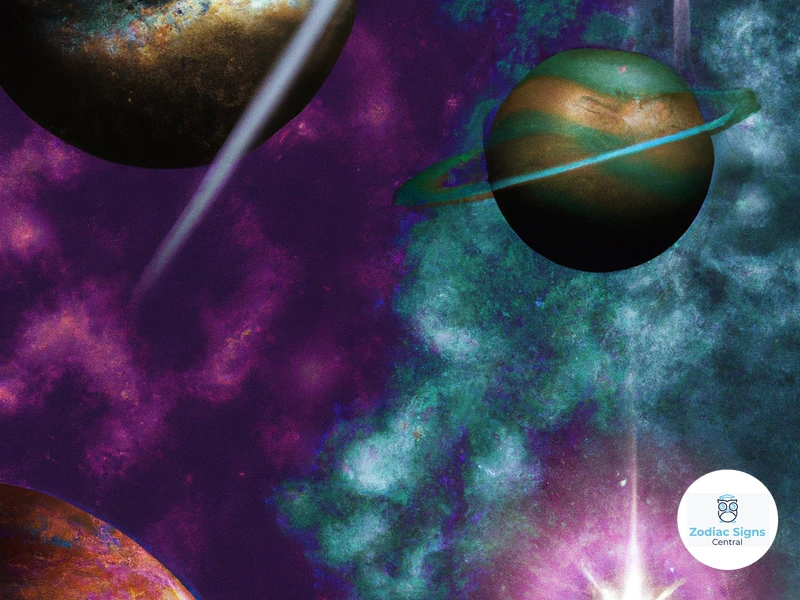
Applying planetary aspects to relationship analysis is a powerful tool for gaining deeper insights into the dynamics between individuals. Astrologers look closely at the angles formed between planets in a birth chart to understand the strengths, challenges, and potential of a relationship. Each aspect carries its own unique energy and symbolism, influencing different aspects of the relationship. For example, a Sun-Moon conjunction can signify a strong emotional connection and a deep sense of understanding between partners. On the contrary, a Sun-Moon opposition may indicate contrasting needs and a tug-of-war between individual identities. Trines represent harmonious energy and compatibility, fostering ease and cooperation in communication and shared goals. Squares, on the other hand, bring tension and challenges, requiring conscious effort to navigate conflicts and find common ground. Sextiles offer opportunities for growth and development, promoting collaboration and cooperation. By interpreting these aspects within the context of the relationship, astrologers can shed light on patterns, themes, and potential areas of growth. This analysis allows individuals to better understand their relationship dynamics, navigate challenges, and work towards building a stronger, more harmonious bond. By applying planetary aspects to relationship analysis, individuals can gain a deeper understanding of their partnerships and make conscious choices to create a fulfilling and balanced connection.
Case Studies: Real-Life Examples
In order to illustrate the significance of planetary aspects in relationship dynamics, let’s explore some real-life case studies. These examples will showcase how different planetary aspects can manifest in actual relationships, providing a deeper understanding of their impact.
Case Study 1: John and Sarah
John and Sarah have been in a committed relationship for several years. Their birth charts reveal a strong Venus-Mars aspect, indicating a potent physical and sexual attraction between them. This aspect ignites a fiery passion and fosters a strong desire for physical intimacy. Despite minor communication challenges due to a challenging Mercury-Jupiter aspect, their overall connection remains strong thanks to the powerful chemistry fueled by the Venus-Mars aspect. This case study highlights the influence of planetary aspects on the romantic and physical aspects of a relationship.
Case Study 2: Mark and Emma
Mark and Emma recently started dating and have noticed a deep emotional connection between them. Their birth charts show a harmonious Sun-Moon aspect, symbolizing emotional compatibility and a sense of mutual understanding. This aspect fosters a strong bond and a deep sense of security within the relationship. Thus, Mark and Emma find it easier to express their feelings and share their emotions with each other. The case of Mark and Emma demonstrates the impact of the Sun-Moon aspect on emotional connection and intimacy.
Case Study 3: Alex and Mia
Alex and Mia’s relationship has experienced its fair share of challenges. Their birth charts reveal a difficult Saturn-Pluto aspect, indicating power struggles and intense transformations within their partnership. This aspect creates friction and tests their relationship’s strength, leading to periods of upheaval and growth. However, with conscious effort and communication, Alex and Mia are learning to navigate these challenges and find strength in their shared experiences. This case study showcases how a challenging aspect can present obstacles but also opportunities for growth and evolution within a relationship.
By examining these real-life examples, we can observe the diverse ways in which planetary aspects can manifest and influence relationship dynamics. Whether through intense passion, emotional connection, or challenging growth, planetary aspects offer valuable insights into the dynamics at play within relationships.
Strategies for Managing Challenging Aspects

When it comes to managing challenging aspects in relationships, there are several strategies that can help navigate the potential difficulties. Communication is key in any relationship, but it becomes even more essential when dealing with challenging aspects. Honest and open dialogue about the tensions and conflicts that arise from the aspects can foster understanding and empathy between partners. Another approach is to focus on personal growth and self-awareness. Recognizing our own triggers and patterns can help us take responsibility for our reactions and work towards personal development. It’s important to remember that no relationship is perfect, and accepting the flaws and imperfections inherent in any partnership can create space for growth and acceptance. Seeking external support from therapists or relationship counselors can also be beneficial in navigating challenging aspects. Together, partners can gain new perspectives, learn effective communication techniques, and develop tools to manage conflicts. Emphasizing compassion and empathy towards one another is crucial in maintaining a healthy and thriving relationship. By acknowledging the impact of challenging aspects and actively working on managing them, couples can strengthen their bond and overcome obstacles, ultimately leading to a more fulfilling and resilient partnership.
Conclusion
In conclusion, planetary aspects play a crucial role in understanding and interpreting relationship dynamics in astrology. By examining the angles formed between planets in a birth chart, individuals can gain valuable insights into compatibility, communication, emotional connection, and intimacy. Each aspect represents a unique energy and influence on a relationship, whether it is harmonious or challenging. Astrologers can interpret these aspects, such as conjunctions, oppositions, trines, squares, and sextiles, to provide a deeper understanding of the strengths and challenges within a relationship. With this knowledge, individuals can better navigate their connections and develop strategies to manage challenging aspects. Whether you’re exploring the compatibility between two signs or seeking a greater understanding of your own relationships, understanding planetary aspects is an invaluable tool. So, embrace the wisdom of the cosmos and unlock the secrets of planetary aspects to enhance the dynamics of your relationships.
Frequently Asked Questions
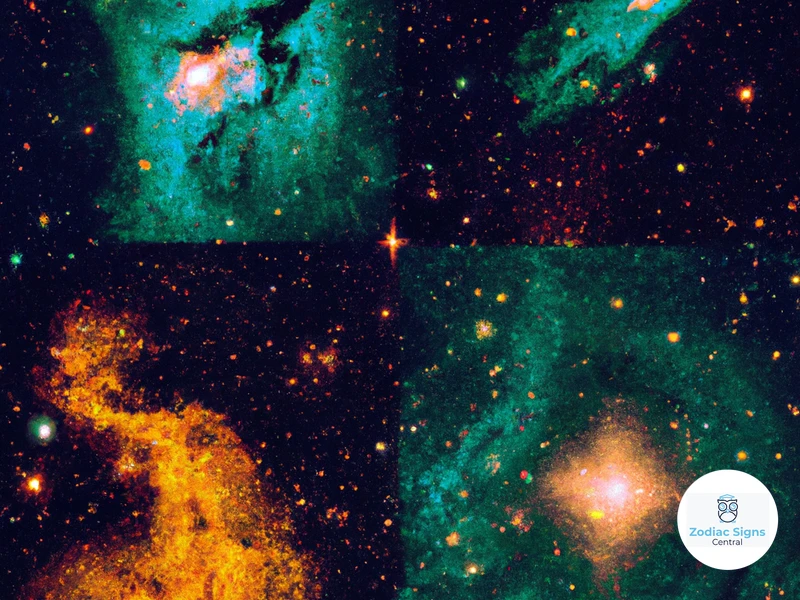
1. How do planetary aspects impact compatibility in relationships?
Planetary aspects can greatly influence compatibility in relationships by revealing the energetic dynamics between individuals. Harmonious aspects, like trines and sextiles, often indicate a natural flow of energy and compatibility, while challenging aspects, such as squares and oppositions, may indicate areas of tension or potential growth.
2. Can planetary aspects determine the success of a relationship?
While planetary aspects provide valuable insights, they do not solely determine the success of a relationship. Factors such as communication, shared values, and individual growth also play significant roles. Planetary aspects, however, can shed light on potential challenges and strengths within a relationship, helping individuals navigate and work through them.
3. How do planetary aspects affect communication in relationships?
Planetary aspects can influence communication styles and patterns within relationships. For example, a harmonious Mercury-Jupiter aspect may foster open and expansive communication, while a challenging Mercury-Saturn aspect may bring about more reserved or cautious communication.
4. Can planetary aspects explain emotional connection and intimacy?
Yes, planetary aspects can provide insights into emotional connection and intimacy. Aspects involving the Moon and Venus, such as a favorable Moon-Venus aspect, can enhance emotional understanding and deepen intimacy between partners.
5. Are there any specific planetary aspects that indicate a soulmate connection?
While there is no single planetary aspect that definitively indicates a soulmate connection, certain aspects, like a conjunction between the Sun and Moon, or a harmonious Venus-Mars aspect, may signify strong soul-level compatibility and connection.
6. Can challenging planetary aspects be overcome in a relationship?
Yes, challenging planetary aspects can be overcome in a relationship with conscious effort, communication, and a willingness to grow together. Working through the lessons that these aspects present can lead to personal and relational transformation.
7. How can I interpret the different types of planetary aspects in a birth chart?
Interpretation of planetary aspects involves understanding the qualities and energies associated with each planet involved, as well as the nature of the aspect itself. For example, a conjunction brings a blending of energies, while an opposition presents contrasting energies that can lead to balance or tension.
8. Can planetary aspects change over time in a relationship?
Planetary aspects in a birth chart remain constant, but the transits or current positions of the planets can create new aspects or activate existing ones. As relationships evolve, different aspects may come into play, influencing the dynamics in new ways.
9. Are there any online tools to calculate and analyze planetary aspects in a birth chart?
Yes, there are several online astrology websites and software that can calculate and analyze planetary aspects in a birth chart. These tools can provide detailed interpretations and insights into the significance of specific aspects.
10. Can planetary aspects affect other types of relationships, like friendships or work relationships?
Absolutely! Planetary aspects can impact all types of relationships, including friendships and work relationships. They influence the overall dynamics, compatibility, and communication patterns within any connection between individuals.
References
- Exploring Astrological Aspects: Unveiling the Dynamics of …
- Aspects of Love and Relationships: Compatibility in Astrology
- The Role Of Planets In Relationships: Astrological Insights
Frequently Asked Questions

1. Can planetary aspects really influence relationship dynamics?
Yes, planetary aspects have a significant impact on relationship dynamics. They provide insights into the compatibility, communication, and emotional connection between individuals in a relationship.
2. What is the significance of compatibility and synastry in relationships?
Compatibility and synastry refer to how well the planetary positions of two individuals align and interact. Strong compatibility in planetary aspects can enhance harmony and understanding in a relationship.
3. How do planetary aspects affect communication and understanding in relationships?
Certain planetary aspects can enhance or hinder communication and understanding. Harmonious aspects promote effective communication, while challenging aspects may lead to misunderstandings and conflicts.
4. What role do planetary aspects play in emotional connection and intimacy?
Planetary aspects can indicate the level of emotional connection and intimacy in a relationship. Positive aspects encourage emotional openness and vulnerability, while challenging aspects may create emotional barriers or unease.
5. What are the key planetary aspects to consider in relationships?
Some of the key planetary aspects to consider in relationships are the Sun-Moon aspect, Venus-Mars aspect, Mercury-Jupiter aspect, and Saturn-Pluto aspect. These aspects provide valuable insights into various aspects of a relationship.
6. How can we interpret different planetary aspects?
Different planetary aspects can be interpreted based on their specific nature. Conjunctions indicate a merging of energies, oppositions represent tension or polarity, trines signify harmony and opportunity, squares indicate challenges, and sextiles highlight potential growth and cooperation.
7. How can we apply planetary aspects to relationship analysis?
To apply planetary aspects to relationship analysis, you can compare and analyze the aspects between the birth charts or horoscopes of two individuals. This helps in understanding the strengths, challenges, and overall dynamics of the relationship.
8. Are there any real-life examples of the influence of planetary aspects on relationships?
Yes, there are numerous real-life examples where the influence of planetary aspects on relationships has been observed. These examples highlight the impact of planetary aspects on compatibility, communication, emotional connection, and overall relationship dynamics.
9. What strategies can help manage challenging planetary aspects in relationships?
Strategies such as open and honest communication, understanding each other’s differences, seeking professional guidance if needed, practicing empathy and compromise, and focusing on personal growth can help manage challenging planetary aspects in relationships.
10. How important are planetary aspects in understanding relationship dynamics?
Planetary aspects are key to understanding relationship dynamics as they provide valuable insights into compatibility, communication, emotional connection, and various other aspects of a relationship. Considering and analyzing these aspects can contribute to building and maintaining healthy and fulfilling relationships.

